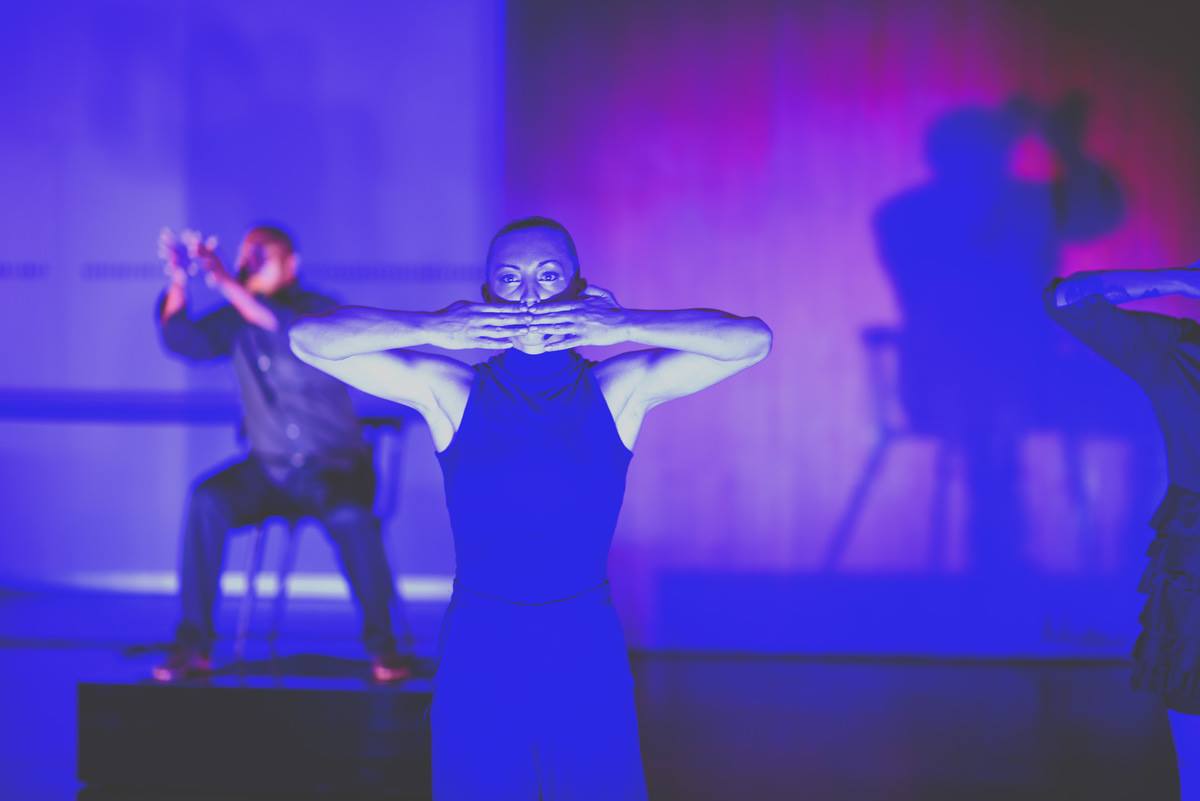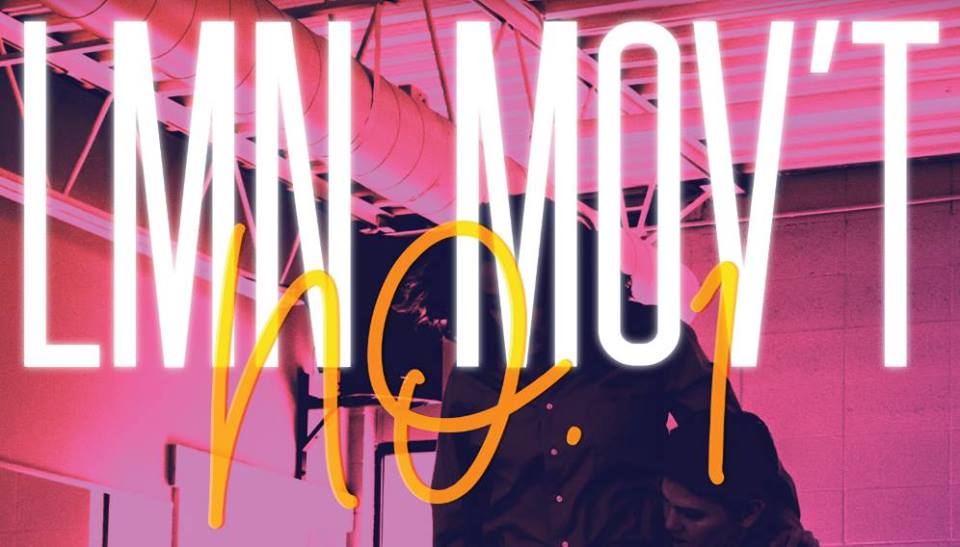I always appreciate the wide variety of research and accessibility found within the Salt Lake City dance community. From established repertory companies to college programs, there is truly dance to be found for all vernaculars and audience interests. I was struck by this upon attending Myriad Dance Company’s Lavender Words/Saltwater Resolutions, choreographed by the group’s former artistic director Temria Airmet. Airmet, who is currently pursuing an MFA in dance from California State University, is a longtime member of the local dance community. It was a treat to see her return to her home company to create a work influenced by her time away. I also appreciated the variety and breadth of our community upon entering The Leonardo, a downtown museum adjacent to the Salt Lake Public Library, as I realized I did not recognize anyone in the audience. In a nearly packed house, I was pleasantly reminded that dance cannot be, and in this case was not, insular.
Lavender Words/Saltwater Resolutions was presented as a visualization of Airmet’s relationship with depression, as gleaned from the program, audio, and a talk-back following the performance. I surprised myself when I became choked up at certain points while watching the dance. As someone who has also struggled with anxiety and depression, I was skeptical that the work, presented in a sparse lecture space, would be able to offer me a new visualization that felt authentic to such a strong internal emotional experience. I’m still not certain that the overall piece achieved this, but there were enough clear moments that brought me to a sense of catharsis alongside the performers.
The show began with Symmer Andrews lip syncing to Jake Tyler’s “I’m Fine” TED Talk, a sort of stand-up routine highlighting the importance of naming and sharing feelings. Andrews was so successful at this opening moment; her body language was loose and congenial while switching between the emotions of the words as authentically as Tyler’s talk. From this opening moment, the dance took off in a series of vignettes, providing a snapshot into a cycle of emotions. While the choreographic structure became predictable at times (extended canon into either stillness or a solo moment, for example), Airmet’s creative use of the space kept the piece fresh and unknown. From a dancer tearing off pieces of paper and placing them so only the front row could see, to not being afraid of exiting and immediately re-emerging, to the unique lighting patterns created on the side walls, everything seemed like it might have been accidental, yet in doing so felt intentional and extremely defiant.
While the structure created a sense of controlled chaos, the dancers ended up performing much of the same movement as one another, from wave-like patterns of the arms to struggling while crawling towards the audience. Within the chaos, my eye jumped to identifying dancers. The unison was never perfect, but allowed the dancers to shine individually. In a piece about such an individual experience (whether or not it should be is a different question), I appreciated that Airmet allowed this. Andrews, Ashley Creek, Kendall Fischer (Myriad’s current artistic director), Amelia Martinez, Fiona Nelson, Margarita Lucia Olvera, and Alyx Pitkin all had their moments to shine. Some were more memorable than others, but it was refreshing to be reminded that even though this was an ensemble, it was still made up of individuals. I was especially drawn to the intensity of Olvera’s movement. Nothing she did felt reserved; she moved with such risk, even in the stiller moments, embodying a heightened sense of turmoil and relief.
The most effective moment was a trio performed by Andrews, Fischer, and Pitkin. The movement was technically in unison, but each dancer had such a different way of approaching it that it felt like watching three different pieces. The vignette never felt rushed and allowed me to live in the moment with the dancers. Choreographically, it was minimal and gestural but, with the dancers’ focus tending to be internal, I felt every emotion they did as their hands shook and grasped at themselves. When making work about an emotional experience such as depression or anxiety, it's good to be conscious of whether the performers are just portraying or truly experiencing an emotion; here was the most successful example of a true cathartic experience throughout the show.
Almost immediately afterward, the rest of the cast re-entered the space in stillness as Pitkin delivered a poem, which I believe Airmet wrote. Pitkin broke down in tears that felt unplanned, making her delivery that much more powerful. The words “Just give it another day” seemed to reflect both the poet speaking to themselves, but also to the audience. It became more poignant when three of the dancers read a letter aloud that was written by Airmet’s grandmother. While their delivery might have been a little stiff, I found myself choking back tears as the words (“I can tell by how you sound”) seemed to come right from my own mother, trying to discern something she sensed to be not quite right. The universality of needing an outside figure to recognize your pain resonated strongly with me.
At the end of Lavender Words/Saltwater Resolutions, Airmet opened the floor for a Q & A. Starting with questions about how the piece was put together (“How do you select music?” or “What is your creative process like?”), the Q & A morphed into a forum that touched on experiences grappling with anxiety and depression, relief at its depiction in dance, and a conversation on difficulties identifying with anxiety or depression when not personally suffering from either. In these final moments, I was reminded of my appreciation for the audience and its variety of individuals. I also appreciate Myriad’s commitment to keeping dance accessible, as the Q & A reiterated the importance of art - not just in artists’ lives but in audiences’ as well. Often, we don’t know we need something until we have experienced it, and I applaud Myriad Dance Company and Temria Airmet for expanding their community in a relatable yet meaningful way.
Natalie Gotter is a performer, choreographer, instructor, filmmaker, and researcher. She recently completed an MFA in modern dance at the University of Utah and is a faculty member at Utah Valley University, Westminster College, and Salt Lake Community College.






